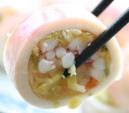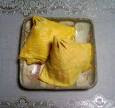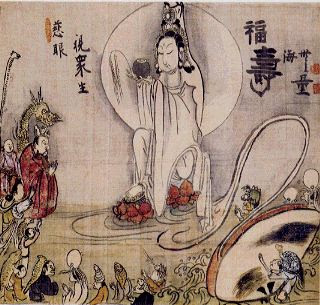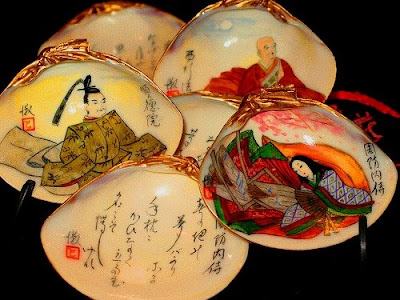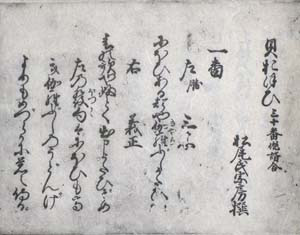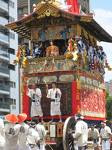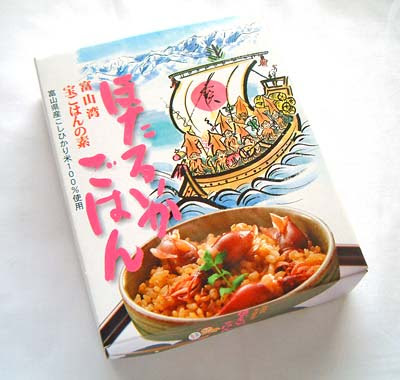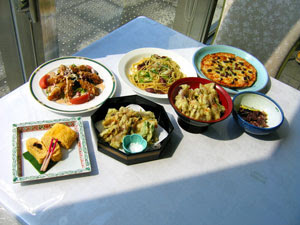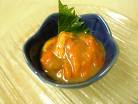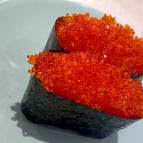[ . BACK to WORLDKIGO TOP . ]
. Legends about Iwashi sardines .
::::::::::::::::::::::::::::::::::::::::::::::::::::::::::::::::::::::::::::::::::::::::::::::::::::
Sardine (iwashi)
***** Location: Japan
***** Season: various, see below
***** Category: Humanity
*****************************
Explanation
One of the most common fish in the warm currents around Japan. They come in large crowds and are therefore rather cheap on the market. The fresh ones have a silvery belly and are rather pretty to look at. Some have black spots on the side.
To show the freshness of their catch, vendors of old would call in the streets:
てて噛む鰯はいらんかー。とれとれのてて噛む鰯やでェ
tete kamu iwashi wa iran kaa.
toretate no tete kamu iwashi ya dee
Do you want sardines that bite your fingers?
Freshly caught, these sardines will bite your fingers!
:::::::::::::::::::::::::::::::::::::::::::::::::::::::::::::::::::::::::::::::::::::::::::::::::::
kigo for all spring
haru iwashi 春鰯 ( はるいわし) sardines of spring
ooba iwashi 大羽鰯(おおばいわし)
very big sardines "with great wings"
. . . CLICK here for Photos !
:::::::::::::::::::::::::::::::::::::::::::::::::::::::::::::::::::::::::::::::::::::::::::::::::::::
kigo for all autumn
iwashi 鰯 (いわし) sardine
..... iwashi 鰮(いわし) Sardinia spp.

iwash hiki 鰯引(いわしひき)fishing for sardines
iwashi ami 鰯網(いわしあみ)net for sardine
iwashibune 鰯船(いわしぶね)boat for fishing sardines
iwashimi 鰯見(いわしみ)watching for sardines
maiwashi, ma iwashi 真鰯(まいわし)
Sardinops melanostictus
aki iwashi 秋鰯(あきいわし)autumn sardine
iwashi hosu 鰯干す(いわしほす)drying sardines
iwashi uri 鰯売(いわしうり)vendor of sardines
hishiko ひしこ hishiko-sardine, Japanese anchovy
... shiko しこ、shiko iwashi しこ鰮(しこいわし)
. . . CLICK here for Photos !
seguro iwashi背黒鰯(せぐろいわし)sardine with a black back
katakuchi iwashi 片口鰯(かたくちいわし)"sardine with half a mouth"
Engraulis japonica
chirimen iwashi 縮緬鰯(ちりめんいわし)"sardine like
chirimen shrunk cloth"
. . . CLICK here for Photos !
koiwashi 小鰯(こいわし)small sardine
hishiko hosu ひしこ干す(ひしこほす)drying hishiko-sardines
hishikozuke 鯷漬 (ひしこづけ) pickled hishiko-sardines
kigo for mid-autumn
hishiko has many regional names
ヒシコイワシ hishiko iwashi、シコ shiko、シコイワシshiko iwashi、田作り(タヅクリ tazukuri)、五万米(ゴマメ
gomame)、背黒鰯(セグロイワシseguro iwashi)、狼鰯(オオカミイワシookami iwashi .. like a wolf)、脹眼(ハンガンhangan)、金山(カナヤマkanayama ... gold mountian)、丸(マルmaru ... round )、ヒラレ hirare、泥目(ドロメdorome)、ドロイワシdoro iwashi、ママゴmamago、エタレetare、クロタレkurodare、シラス
shirasu、タレクチtaretachi、チリメンchirimen、タレtare、ホオタレootare、ホホタレ、ホウタレ、ブトbuto、コシナガkoshinaga、カエリkaeri 、カクハリ kakuhari
Kintaroo iwashi 金太郎イワシ / 金太郎鰯 Kintaro sardine
from Shimane prefecture, Hagi town
梅さくやごまめちらばふ猫の墓
ume saku ya gomame chirabau neko no haka
plum blossoms--
dried sardines scattered
on the cat's grave
Tr. David Lanoue
. Kobayashi Issa 小林一茶 in Edo .
:::::::::::::::::::::::::::::::::::::::::::::::::::::::::::::::::::::::::::::::::::::::::::::::::::::
kigo for late winter
iwashi no kashira sasu
鰯の頭挿す(いわしのかしらさす)
piercing the head of a sardine
like
WASHOKU . hiiragi sasu 柊挿す piercing with a holly
:::::::::::::::::::::::::::::::::::::::::::::::::::::::::::::::::::::::::::::::::::::::::::::::::::::
......................................... not to mix up with this one
kigo for all winter
urume (潤目)うるめ round herring big-eye sardine
Etrumeus teres.
also called : hon-urume ホンウルメ (real urume) or
urume-iwashi 潤目鰯 うるめいわし /ウルメイワシ : "Urume-sardine"
urume means to have wet, moist eyes. (urumu うるむ (潤む). They have much bigger eyes than other
iwashi.
They have less fat than the sardines. They are around all year, but taste best in winter.
In Kumamoto it is called "big-eye sardine"
oome iwashi オオメイワシ, in the Toyama area
tonbo トンボ (dragonfly), in Kochi and Shikoku there is no difference between urume-iwashi and ma-iwashi マイワシ.

Basho kasen 'Summer Moon'. Bonchoo's v4:
火うちたたく うるめ一枚
灰うちたたくうるめ一枚
hai uchitataku urume ichimai
Bonchoo 凡 兆 !
Higginson's translation:
knocking the ashes off
one piece of sardine
Earl Miner, Japanese Linked Poetry (1979), in his notes to the same verse (p.300, calls it 'Miscellaneous' (i.e. not seasonal);
Miner's translation:
the charcoal ash is shaken off
the dried sarding broiled at noon
Maeda Cana, Monkey's Raincoat (1973) is the book that clarifies the matter. In his notes to that Bonchoo verse, Cana states (p.90):
"urume: urume iwashi; sardine. "Sardine" usually indicates autumn, but "dried sardine" belongs to no particular season" .
Cana's translation:
flip off the ashes
one dried sardine
::::::::::::::::::::::::::::::::::::::::::::::::::::::::::::::::::::::::::::::::::::::::::::::::::::
quote
Sardines, or pilchards, are a group of several types of small, oily fish related to herrings, family Clupeidae. Sardines were named after the island of Sardinia, where they were once in abundance.
Canned "sardines" in supermarkets may actually be sprats (such as the "brisling sardine") or round herrings.
Sardines are healthful and considered a "brain food." These fish are rich in omega 3 fatty acids, which can help maintain a healthy heart. Recent studies suggest that omega-3 fatty acids slow the progression of mild to moderate Alzheimer's disease. These fatty acids can also help control blood sugar level. Not only are sardines packed with omega-3 fatty acids, but they are also a good source of vitamin D, calcium, B12 and protein.
Sardines are extremely low in contaminants such as mercury.
© More in the WIKIPEDIA !
:::::::::::::::::::::::::::::::::::::::::::::::::::::::::::::::::::::::::::::::::::::::::::::::::::::

shirasu しらす
small white sardines
In Maihara (Shizuoka)at 遠州灘 most of these shirasu are fished in spring.
They are put in hot water (kama-age 釜揚げしらす) and can be eaten like this, or half-dried or full dried (hoshi-shirasu, chirimenjako, chirimen jako).
In Kyoto, the dried shirasu have been a substitute for fresh fish and are used in many dishes of the OBANZAI homne cooking.
shirasu sanshoo シラス山椒 with mountain pepper
see also
tatami iwashi, below.
shirasu biiru はしらすビール beer with shirasu fish
from Enoshima, Kanagawa prefecture
:::::::::::::::::::::::::::::::::::::::::::::::::::::::::::::::::::::::::::::::::::::::::::::::::::
 Dishes with Sardines ... iwashi ryoori
(not kigo)
Dishes with Sardines ... iwashi ryoori
(not kigo)
鰯料理 いわしりょうり
Sardines are fishes in the waters off
Chiba all year round. They are best eaten fresh, because they do not keep well. iwashi basically means yowashi, not easy to keep.
The chinese character means "fish" and "soft, weak". Maybe because the meat does not keep long, or maybe, these small fish are always on the run for being eaten by larger fish.
maiwashi, ma-iwashi 真いわし Sardinops melanostictus (Sardine)
katakuchi iwashi かたくちいわし Engraulis japonica. (Sardelle)
urume iwashi うるめいわし Etrumeus teres (Heringsart)
Most are fished of Chooshi 銚子 along Kujukurihama 九十九里浜 and in this area there are more than 100 ways to eat iwashi.
iwashidango no tsumire jiru 鰯団子のつみれ汁 soup with sardine balls
. . . CLICK here for Photos !
iwashi no goma-ae イワシのごま漬 sardines with sesame dressing
made from fresh katakuchi iwashi with vinegar, sesame, ginger and chillies
. . . CLICK here for Photos !
They are often used to make DASHI.
iriko ... kleine getrocknete Sardinen, für Dashi. Meist „japanese pilchard“, Sardinops melanostictus und Katakuchi iwashi
They are also processed into kamaboko fish paste, for example
eso 工ソ sardines.
(
eso is a kigo for summer)
irikogohan iriko gohan, irikomeshi いりこ飯 / いりこめしrice with little sardines
from katakuchi iwashi. They are boiled for a moment, then dried and later added to cooked rice.
Speciality of Kagawa prefecture.
. . . CLICK here for Photos !
iwashi baagaa, iwashi hanbaagu いわしハンバーグ
burger with sardine meat
. . . CLICK here for Photos !
iwashi dango いわし団子 sardine dumplings
From Sakai minato at the beach Yumigahama, Tottori. Made from April till May. Round balls are put on sticks and skewered on the grill.
. . . CLICK here for Photos !
iwashi no unohana sushi いわしの卯の花寿司
speciality of Ishikawa prefecture
iwashi no unohana tsuke イワシの卯の花漬け
iwashi no unohana ae 鰯の卯の花和え
. . . CLICK here for Photos !
unohana is the floewr deutzia. Deutzie.
unohana is also a leftover product from making tofu.
iwashi no tsumirejiru いわしのつみれ汁 soup with sardine balls
famous in many parts along the Inland sea, especially Ehime prefecture
With vegetables that grow in the family garden.
. . . CLICK here for Photos !
:::::::::::::::::::::::::::::::::::::::::::::::::::::::::::::::::::::::::::::::::::::::::::::::::::::
. WASHOKU
iwashi no kezuribushi 蒲原いわし削りぶし shredded dried sardines
From Kanbara, Shizuoka
koiwashi 小いわし "small sardines", Japanese anchovy
speciality of
Hiroshima
They come in various dishes, fried or grilled, as sashimi or tenpura.
. . . CLICK here for Photos !
iwashi no atama yaki イワシの頭焼き (yakigashi 焼嗅がし)
At the Sumiyoshi shrine 住吉神社 in Hiroshima the head of 1000 sardines are roasted by the shrine maidens in traditinal garb to procude a smell that wards off evil demons at the time of Setsubun, February 3, to prepare and clean the town for the new year (according to the Asian lunar calendar). They fan the fire with great fans.
This is an old ritual since the Heian period.
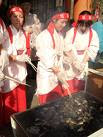
:::::::::::::::::::::::::::::::::::::::::::::::::::::::::::::::::::::::::::::::::::::::::::::::::::::
maruyaki 鰯丸焼
. . . CLICK here for Photos !
sashimi いわし刺身
. . . CLICK here for Photos !
sushi いわし寿司
. . . CLICK here for Photos !
tatami iwashi でたたみいわし small dried sardines pressed into a cracker-like square form
Especially from Koshigoe (Kamakura, Kanagawa).
. . . CLICK here for Photos !
a Japanese processed food product made from baby sardines or shirasu (白子 / しらす) laid out and dried while entwined in a single layer to form a large mat-like sheet. Typically, this is done by drying them in the sun on a bamboo frame, a process that is evocative of the manufacture of traditional Japanese paper.
Tatami Iwashi can then be cut to various sizes and used in different ways. Common serving styles include use as an ingredient in soup or cut into small pieces for use as a snack or accompaniment to sake or beer drinking, known as sakana.
This food item is named for its resemblance to a straw tatami mat common in traditional Japanese-style rooms or houses.
© More in the WIKIPEDIA !
There is also a manga character in NARUTO with this name.
*****************************
Worldwide use
Germany
iwashi ... Europäische Sardine. Sardina pilchardus
European pilchard
katakuchi iwashi ... Anchovy. Engraulis japonica
maiwashi, ma-iwashi ...“gemeine Sardine”Sardinops melanostictus
Die Gewässer um die Halbinsel Chiba 千葉 sind reich an frischen Fischen, weil die Kuroshio-Strömung warmes Wasser an die Küsten bringt. Im
Hafen von Chooshi 銚子港 werden das ganze Jahr über Sardinen (iwashi 鰯) gefangen und die Fischer kennen mehr als 100 verschiedene Rezepte, um ihren Fisch zu genießen. Sardinen halten sich nicht lange, das chinesische Schriftzeichen besteht einleuchtenderweise aus den Teilen für FISCH und SCHWACH.
Verschiedene Gerichte mit gehacktem Fischfleisch, vermischt mit Miso-Paste und einem rohen Ei als Dekoration (nameroo) passen gut zum Bier und im Sommer in kaltem Wasser aufgerührt wird daraus eine erfrischende Miso-Suppe (mizu namasu 水なます).
. . . CLICK here for nameroo Photos !
. . . CLICK here for mizu namasu 水なます Photos !
*****************************
Things found on the way
During the Edo period, people used oil to burn their small lights at night.
The most expensive was
natane abura 菜種油(なたねあぶら), made from rapeseed oil.
The cheapest oil for light was made from sardines ! It was a fish oil (gyoyu ぎょゆ【魚油】 that smelled pretty bad, but was cheap enough for the poorer cityfolk.
saba was also used for pressing oil.

The dealers for fish oil 魚油問屋 gyoyudonya
*****************************
HAIKU
Kobayashi Issa
Tr. David Lanoue
鰯焼片山畠や薄がすみ
iwashi yaku kata yama hata ya usu-gasumi
grilling sardines
in a mountain field...
thin mist
蕗の葉にいわしを配る田植哉
fuki no ha ni iwashi wo kubaru taue kana
sardines served
in butterbur leaves...
planting rice
木がらしやいわしをくるむ柏の葉
kogarashi ya iwashi o kurumu kashiwa no ha
winter wind--
wrapping sardines
in oak leaves
麦秋や子を負ながらいはし売
mugi aki ya ko o oi nagara iwashiuri
ripened barley--
with a child on her back
the sardine vendor
鰯めせめせとや泣子負ながら
iwashi mese mese to ya naku ko oi nagara
"Sardines! Get your sardines!"
she cries, a crying baby
on her back
Sardine is an autumn season word, according to the editors of Issa zenshû (Nagano: Shinano Mainichi Shimbunsha, 1976-79) 1.551. The association between sardines and autumn must not be widely known, since Makoto Ueda, while commenting on this haiku, notes that it lacks a season word; Dew on the Grass: The Life and Poetry of Kobayashi Issa (Leiden/Boston: Brill, 2004) 128.
:::::::::::::::::::::::::::::::::::::::::::::::::::::::::::::::::::::::::::::::::::::::::::::::::::::
雲の色 明日は 鰯の群れがくる
kumo no iro asu wa iwashi no mure ga kuru
color of the clouds -
tomorrow a swarm of sardins
is sure to come
Yoneda Koohei 米田鉱平
Tr. Gabi Greve
*****************************
Related words
*****
Herring (nishin) Japan. Koorai Iwashi,
かどいわし kado iwashi
*****
Mackerel Clouds (iwashigumo) Japan
*****
WASHOKU : FISH and SEAFOOD SAIJIKI
. Legends about Iwashi sardines .
:::::::::::::::::::::::::::::::::::::::::::::::::::::::::::::::::::::::::::::::::::::::::::::::::::::::::::::::::::::::::::
[ . BACK to DARUMA MUSEUM TOP . ]
[ . BACK to WORLDKIGO . TOP . ]
:::::::::::::::::::::::::::::::::::::::::::::::::::::::::::::::::::::::::::::::::::::::::::::::::::::::::::::::::::::::::::

